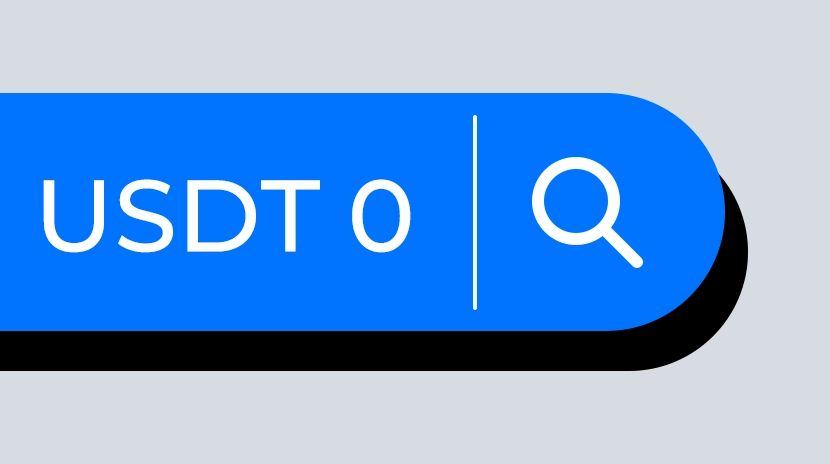Myths and Realities of Stablecoins: A Field Guide from 20 African Countries
Africa isn’t a single market—it’s made up of 54 distinct markets, each with its own regulators, central bank policies, and political realities. The fastest way to fail is to treat Africa like one country, open with a generic “Africa” slide, and try to sell a cookie-cutter stablecoin pitch. The Kredete team recently visited 20 countries, meeting with more than 100 bankers, regulators, and policymakers. This is a candid, practical summary: what’s myth, what’s reality, and what it really takes for stablecoins to work.
Key Takeaways:
- Africa’s stablecoin opportunity sits on a razor’s edge between policy priorities and political risk. Sometimes it’s green-lit as a pilot; other times, if you act without a permit, you’re out—no questions asked.
- Very few countries have a functioning Virtual Asset Service Provider (VASP) licensing system. Others are still at the draft law or sandbox stage. Don’t confuse consultation papers with real licenses.
- Banks move when there’s alignment between relationships, regulatory assurance, and risk narrative—not because you made a LinkedIn post about launching in Africa.
- Quickest credibility test: Can your bank partner submit your plan to the central bank and quickly get a “no objection” letter? If not, you’re spinning your wheels.
Myths vs. Reality (From Real-World Cases)
Myth #1: “Africa needs our stablecoin.”
Reality: Africa needs regulated foreign exchange channels, predictable settlement, and rigorous KYC/AML. In some markets, tokenized deposits issued by banks are institutionally preferred over public chain stablecoins. In others, fiat settlement APIs with detailed reporting are better than any token scheme. What customers want is usable, clearing money—not just whitepapers.
Myth #2: “Africa now has ten VASP licenses—act fast!”
Reality: Online buzz often conflates draft laws, sandboxes, and real licenses. In truth, only a handful of regulatory frameworks are fully operational and actually issuing licenses—and even those come with ongoing oversight. A LinkedIn announcement isn’t real regulatory approval.
Myth #3: “African banks are eager to work with global crypto startups.”
Reality: Banks in Africa are most worried about protecting their licenses. Their leadership wants to know: Will this get us a warning from the central bank? Will our correspondent bank flag issues? Will it break FX rules? If your answer is “not yet,” they won’t move, no matter how many “daily active user” slides you share.
Myth #4: “We can run Africa remotely from our shared office in Miami, Tel Aviv, or São Paulo.”
Reality: Africa is a relationship-driven market. If you don’t have a local champion to get you into the right offices, you’ll waste years “about to launch.” Locals know who signs, who decides, and when not to call—or you’ll have to show up yourself and build those relationships.
North Africa: Where Monetary Rules Collide with Crypto Hype
North Africa perfectly shows the gap between social media narratives and real-world realities. The dinar, dirham, and pound are tightly controlled currencies. These countries enforce strict FX control. This means unauthorized money flows, offshore accounts, or retail crypto trades can quickly get you into legal trouble.
In practice:
- Bank risk committees treat unapproved crypto inflows as FX losses. Even if you pitch “just stablecoins,” the legal basis is usually FX violation—not crypto-specific regulation.
- Enforcement is real. Breaching FX rules can mean fines and jail. That’s the harsh reality behind all those “crypto adoption” charts.
- Regulatory debates are constant—about sandboxes and recognizing digital asset trading—but that doesn’t mean you can do whatever you want. The path to compliance runs through banks, licensed intermediaries, and central bank policy.
Bottom line: In strictly FX-controlled jurisdictions, your “stablecoin growth cycle” can look like currency law evasion. Don’t pitch it away—operate by the real law.
Regulatory Overview (On-the-Ground Insights)
No companies are named here—the focus is firsthand observations and operational reality. Laws and regulators are evolving, but this is a practical model for founders and product teams.
“Operational VASP Regimes”
In these countries or regions, you can actually apply for, get, and operate under dedicated virtual asset regimes (or equivalent licenses). Banks, auditors, and compliance teams accept them.
- South Africa: Crypto assets regulated as financial products. Licenses active. Banks and market infrastructure working together. Strong policy dialogue progress and real regulatory capacity.
- Mauritius: Mature, offshore-savvy regulator. VASP licenses are real and compliance standards are high. “We’re licensed here” means something to banks.
- Seychelles: Came late to the game, but a workable licensing structure now exists. Don’t confuse legacy FX issues with current compliance—the regime is maturing rapidly.
- Namibia: Has dedicated virtual asset law. Secondary rules are still being drafted, but there’s legal ground for banks and law firms.
- Botswana: Legislation is in place; regulatory attitude is conservative but clear. There’s a real path for compliant operators.
Gray area, but progressing:
Nigeria: The central bank now allows banks to serve VASPs under clear rules; the securities regulator is building a comprehensive framework. Deals are possible with the right partners, but risk controls must be tight.
“Drafts, Sandboxes, and Signals”
Kenya, Rwanda, Ghana: Formal draft policies, sandboxes, and consultation docs are live. These are not licenses. If you want to pilot under regulatory supervision, now is the time to work with stakeholders. Treat it like an RFP: prep your docs, AML manual, and contingency plans.
“FX First, Everything Else Second”
North Africa and parts of West/Central Africa: Currency regulation rules. Your best bet is a bank-led tokenization pilot, bank-grade fiat settlement reporting, or partnering with payments companies under strict regulatory frameworks.
Banks Don’t Buy Tokens—They Buy Risk Stories
When you meet CEOs, CFOs, and chief risk officers, what wins them over isn’t “Stablecoins are the future.” Instead, they care about:
1. A regulatory-first architecture
Where are regulators in the data flow? What can your project proactively report—volume, counterparties, suspicious trends?
Can banks send a clear “no objection” memo to the central bank in 48 hours? If you make more work for their compliance team, you’re not ready.
2. FX controls and sanctions compliance
How do you prevent capital flight and arbitrage? Where are your oracles, price feeds, and reconciliation controls? What’s your alert policy?
3. Managing consumer harm and reputational risk
If a journalist tests your product for $200, how do you block KYC bypass? What’s your stance on bans, reversals, or fraud response? Can a bank explain your UX to a minister on short notice?
4. Liquidity and settlement, CEO-level oversight
Who covers hard-to-reach currencies? Who holds the trust account? Who’s the correspondent bank? What if withdrawals freeze late Friday? If you fail, what’s the bank’s risk?
Banks want partnership assurance that “we won’t go under working with you.” Your promises must be reframed as a risk-minimizing, compliance-proof throughput narrative—not the reverse.
The Most Common Mistakes Non-African Founders Make
“We talked to a bank.” Was it a customer service manager or someone who can sign off? If your “bank” can’t get the CEO, CTO, and CFO in the room, you didn’t really talk to the bank.
“We’ve got connections.” In Africa, “connections” aren’t just a Calendly invite—it means someone who gets your paperwork into the central bank’s right department. If your partner can’t text the memo writer, you’re still far from done.
“We comply in X, so we can passport to Y.” This isn’t Europe; there’s no passport rule. Every corridor is earned the hard way.
“We don’t need local equity.” In many markets, real alignment means local ownership—from governance to revenue share. Otherwise, you’re just a vendor—and vendors can be replaced.
“Crypto licenses are everywhere now.” No—some are real and taken seriously, some are draft, and some are just for PR. Know the difference. Stop treating consultation PDFs as licenses.
How to Move Bank Relationships Forward (What Actually Works)
Draft a concise one-page for the central bank.
Purpose, fund flows, customer journey, bank responsibilities, data retention, SAR/STR triggers, travel rule mechanism, and exit plan—all on one page.
Offer a small-scale pilot.
Single channel, volume limits, restricted users, clear stop-loss. Define success criteria regulators care about (fraud rate, disputes, complaints resolution)—not just growth metrics.
Start reporting on day one.
Daily volume/anomaly reports for your partner bank; weekly summaries for policymakers; monthly compliance with screenshots and signatures.
Build auditability into your product.
Create regulator views: downloadable CSVs with KYC hashes, sanctions outcomes, flags, and time stamps. If a regulator wants 50 sample transactions, you can export in minutes.
Handle whispers and backchannels wisely—don’t rush.
You need respected local partners who can discreetly float your case to key figures. Self-promoting posts are useless. Referrals matter.
Understand the real FX landscape.
In FX-controlled areas, the real exchange rate, liquidity windows, and settlement cutoffs matter more than “on-chain fees.” If you don’t know when customs closes, you’re not ready for the payment corridor.
Stablecoins: What’s Myth, What’s Reality?
Myth: By 2030, retail stablecoins will “fix cross-border payments across Africa.”
Reality: In FX-tight markets, retail crypto access is seen as shadow FX. If your flows look like disguised currency trades, you’re subject to enforcement. The best approach is bank-led pilots (tokenized deposits, B2B stablecoin settlements with oversight) or fully transparent fiat rails.
Myth: “Just train the regulators and they’ll approve it.”
Reality: Regulators aren’t waiting around for webinars. They’re managing inflation, currency stability, and systemic risk. Education may help, but the key is to show a tool that fits their policy goals.
Reality: If stablecoins are bank-issued or bank-backed, have clear redemption, audited reserves, and real-time regulatory transparency, they become a compliance mechanism. “Stablecoin” becomes an actual mechanism, not just a name.
Reality: In some markets, stablecoins are the only currency for fully transparent, 24/7 clearing—if your partners can legally hold, redeem, and report. Otherwise, it’s just a fancy demo nobody can use.
Field Notes: 20 Countries
Executives want clear facts, not slogans. “Who holds the money? Who’s responsible? What could break?” Vague answers end meetings with polite farewells—and nothing moves forward.
Competitor banks can be a game-changer. Mention one and interest spikes: “If they’re in, we should hear more.” Use strategically, but don’t bluff. Bluff and your rival will kill your process.
CEO in the room means real action. If the group CEO or decision-maker attends, you leave with a to-do list. Otherwise, “innovation” talks lead nowhere.
Embassies and trade offices are often overlooked. They don’t get you licenses, but they unlock access and trust and lower travel risk. Use them.
Mobile payments are either your best friend or nightmare. In some countries, they’re the fastest, cheapest way to the “last mile.” In others, agent networks and ID leaks make them compliance nightmares. Your bank partner can steer you.
Precise language and legal detail matter. “Approval,” “no objection,” “comfort letter,” “registration,” and “license” are different. Use the right words, or you’ll look amateur.
How to Vet Africa Claims Before You Pitch
Is it a law, regulation, or just a news article?
Bank legal teams check statutes and signed regulations.
If there’s a system, do real licenses exist?
“Draft” doesn’t mean “license.”
What’s the central bank’s FX stance?
Is the currency closed? Convertible only with limits? Declaration requirements? If you can’t explain these, you’re not ready.
If banks work with you, what do they have to report?
Weekly summaries? Real-time suspicious activity? Are you asking them to skip audits?
What does “consumer harm” mean here?
In some places, a flood of social media complaints triggers new policy. In others, one newspaper story gets the minister’s attention.
Who’s your local fixer?
Which law firm, ex-regulator, or respected operator will take your call? If your answer is “we’re globally compliant,” you have no local standing.
How to meet bank execs and regulators: Lessons Learned
Bring business cards. Old-fashioned, but effective—they’re handed up the ladder.
Be on time. Punctuality is non-negotiable; show up late and you’re done.
Respect hierarchy and get top-level buy-in. If your network can bring in a group CEO or board member, do it. When management joins, decisions move fast.
Leverage competitor curiosity. Name rival banks’ interests to turn coffee chats into real work meetings—but only if it’s true.
Ask about central bank proposals. Don’t wait for instructions—present your draft during the meeting.
Bring a checklist. Who does what, when? Which pilot? What are limits? Follow up same day with a one-pager.
Advice for African Founders
Drop the “we’re solving Africa’s problems” marketing. Get out and meet operations teams; talk with regulators and listen. Africa doesn’t need saviors—it needs partners who can bridge policy, product, and politics. If you’re serious, find the most trusted, connected African sponsor available. If you can’t, this isn’t your market—at least not yet.
Also, stop announcing “bank partnerships”—most are just exploratory calls. You don’t want to be the industry joke.
Why Local Capital Matters
The biggest advantage? Adding Africa’s leading VC to your cap table. That team spent years building relationships, earning trust, and learning the regulatory language—things a pitch deck can’t buy. Having joined them in meetings, it’s clear: doors open differently, welcomes are warmer, trust is instant.
This is the real edge: your team brings tech, they bring credibility. It’s what moves you from “another crypto startup” to a trusted bank partner.
No hype—just hard work and execution. It’s how unicorns are born.
Across 20 countries and 100+ banks, one thing stands out: now’s the time for African founders to build real products. Not crypto for crypto’s sake, but regulated cross-border payments that respect currency law, consumer protection, and FX rules.
- If you’re building, here’s your checklist:
- Pick one corridor and own it.
- Design dashboards for management, not just for growth metrics.
- Treat FX law as rule #1.
- Hire locally—managers, compliance leads, and counsel who get into the right office without calendar links.
- Treat licenses as living entities: if you want benefits, accept oversight.
Africa is made of relationships, detail, and governance. Respect all three and you’ll build something built to last.
Disclaimer:
- This article is republished from [TechFlow], copyright belongs to the original author [Adeola Adedewe, Kredete Founder & CEO]. For republication concerns, please contact the Gate Learn team, which will respond according to established process.
- Disclaimer: All views and opinions expressed in this article are solely those of the author and do not constitute investment advice.
- This article’s translations into other languages are by Gate Learn. Unless referencing Gate, do not reproduce, distribute, or plagiarize the translated content.
Related Articles

In-depth Explanation of Yala: Building a Modular DeFi Yield Aggregator with $YU Stablecoin as a Medium

What is Stablecoin?

Top 15 Stablecoins

A Complete Overview of Stablecoin Yield Strategies

Stripe’s $1.1 Billion Acquisition of Bridge.xyz: The Strategic Reasoning Behind the Industry’s Biggest Deal.
